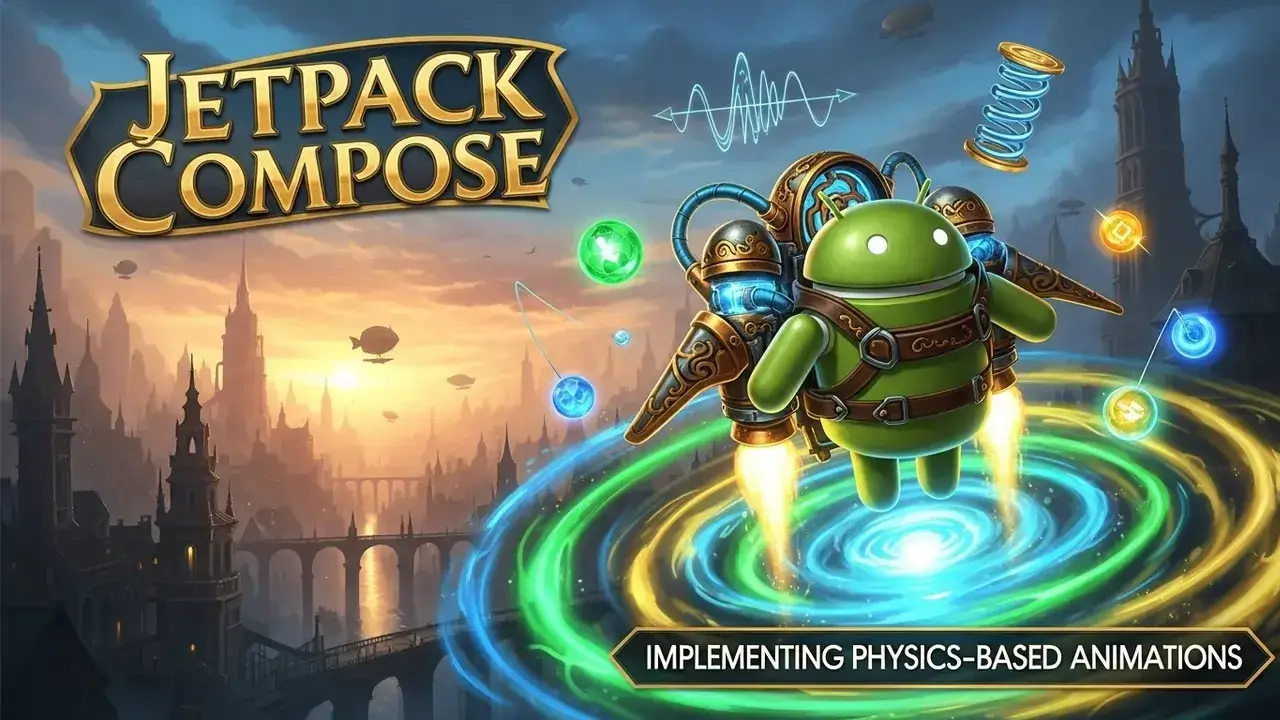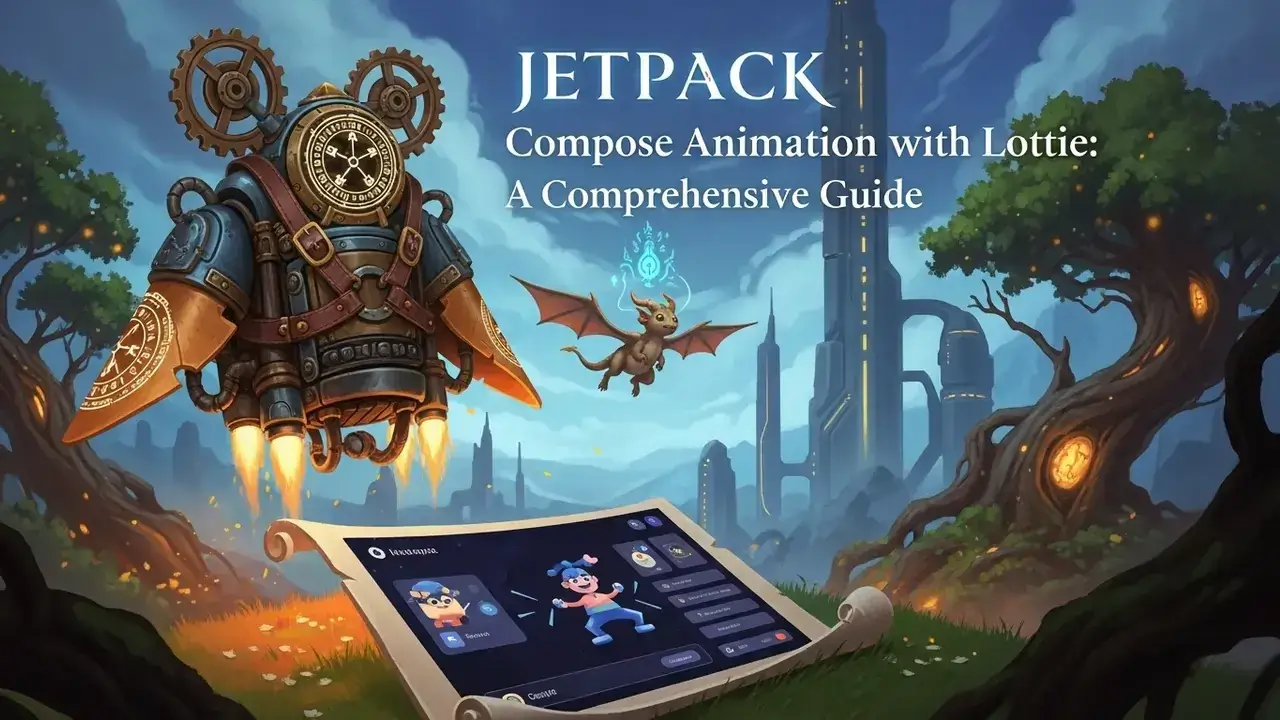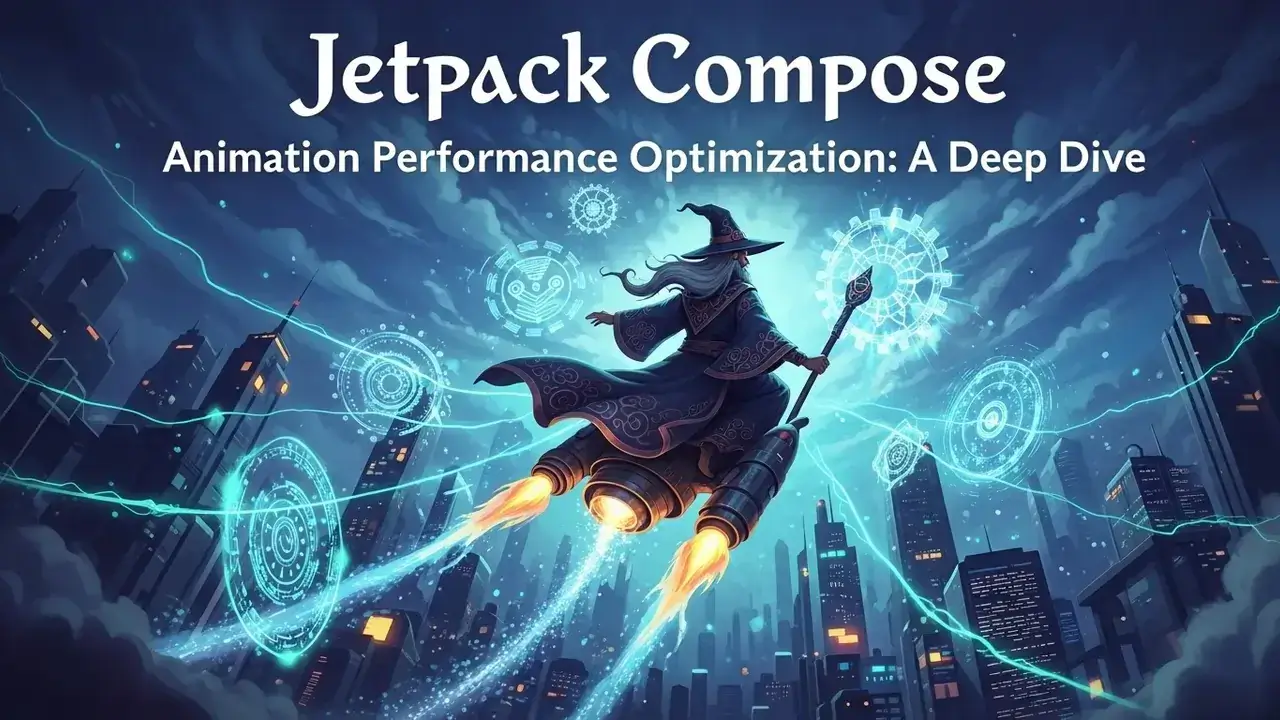Did you know that poorly designed animations can tank user satisfaction by as much as 20 percent? I have witnessed it firsthand. That is why I always stress using proper physics. Physics based animation jetpack compose provides a powerful set of tools for bringing believable realism to your application interfaces.
Jetpack Compose, Google's declarative UI toolkit for Android, stands out as a great choice for building intricate animations. While traditional animations, which often depend on set durations and easing curves, have their uses, they frequently lack the natural quality of physics driven movement. Animations based on physics mimic real world forces such as spring, friction and velocity, creating smooth and organic motion. It truly changes the experience.
In this article, I will show you how to implement animations driven by physics in Jetpack Compose. I will break down compose spring animation, decay animation and fling animation. I will also offer examples and advice to help you develop impressive, lifelike animations for your Android applications. The right animations can significantly improve the user experience.
Before we get into the details, let us examine why physics based animations are so valuable. They add a unique feel to applications.
Realism: By imitating how objects move in the real world, physics based animations make the experience more believable and engaging.
Responsiveness: These animations react right away to what the user does, providing instant feedback and a sense of control.
Flexibility: They adapt well to different screen sizes, orientations and user input, guaranteeing a consistent and smooth experience across devices.
Memorability: Well designed physics based animations improve how people see your application's quality, making it more enjoyable and easier to remember.
Based on my experience on Android projects, even small uses of physics based animations can greatly improve user experience. Think about the satisfying bounce of a spring or how a flung object gradually slows down. These details count.
Understanding Core Animation APIs in Jetpack Compose
Before working with physics, you must grasp the core animation APIs in Jetpack Compose. Compose provides several methods to animate UI elements, including:
animateFloatAsState: Animates a floating point value between two states.animateColorAsState: Animates a color value between two states.Animatable: A flexible API for creating involved animations with custom transitions.Transition: A strong API for animating between composable states.
You can pair these APIs with different animation specifications, including tween (for simple linear animations) and keyframes (for animations with multiple stages). To build physics based animation jetpack compose, we will concentrate on the Animatable API, which provides the control needed to mimic physical forces.
Spring Animations: Bouncy and Elastic Effects
Spring animations are ideal for making bouncy and elastic effects. They simulate a spring’s behavior, oscillating before stopping on a final value. You can do this in Jetpack Compose using the spring animation specification.
Here is how to implement a spring animation:
import androidx.compose.animation.core.import androidx.compose.foundation.layout.import androidx.compose.material.Buttonimport androidx.compose.material.Textimport androidx.compose.runtime.import androidx.compose.ui.Alignmentimport androidx.compose.ui.Modifierimport androidx.compose.ui.unit.dpLet us break this code down:
remember { Animatable(100.dp) }creates anAnimatableinstance starting with a size of 100dp.The
LaunchedEffectblock starts the animation when theisExpandedstate changes.Inside
LaunchedEffect,animatedSize.animateTo()starts the animation.The
animationSpecparameter is set tospring(), defining the spring animation.dampingRatiocontrols how fast the spring settles.Spring.DampingRatioMediumBouncyprovides a moderate bounce.stiffnessdictates how much the spring resists stretching.Spring.StiffnessLowresults in a softer, more elastic feel.
Changing the values for dampingRatio and stiffness can greatly change the animation’s behavior. Higher stiffness values tighten the spring, making it more rigid, while lower damping ratios amplify oscillations. I would suggest trying different combinations.
The spring animation specification provides several parameters for fine tuning:
dampingRatio: As mentioned, this controls how quickly the spring’s oscillations diminish. Common values include:Spring.DampingRatioNoBouncy: No bounce.Spring.DampingRatioLowBouncy: A slight bounce.Spring.DampingRatioMediumBouncy: A moderate bounce (the default).Spring.DampingRatioHighBouncy: A noticeable bounce.
stiffness: This determines how much the spring resists displacement. Common values include:Spring.StiffnessVeryLow: A very soft spring.Spring.StiffnessLow: A soft spring.Spring.StiffnessMedium: A spring with medium strength.Spring.StiffnessHigh: A stiff spring.Spring.StiffnessVeryHigh: A very stiff spring.
visibilityThreshold: This sets the point where the animation is considered complete, stopping indefinite running caused by tiny oscillations.
By changing these parameters, you can create diverse spring effects, from small nudges to big bounces. The possibilities are large.
For example, to make a button that pulses a bit when pressed, use a spring animation with a low damping ratio and medium stiffness:
import androidx.compose.animation.core.import androidx.compose.foundation.clickableimport androidx.compose.foundation.layout.import androidx.compose.material.Buttonimport androidx.compose.material.Textimport androidx.compose.runtime.import androidx.compose.ui.Alignmentimport androidx.compose.ui.Modifierimport androidx.compose.ui.draw.scaleimport androidx.compose.ui.unit.dpIn this example, the scale modifier adjusts the button’s size based on the animation value. Pressing the button reduces the scale a bit, creating a subtle pulsing effect.
Decay Animations: Simulating Gradual Slowdown
Decay animations simulate how an object gradually slows down because of friction. They work well for effects such as scrolling inertia or the smooth deceleration of a thrown object. Jetpack Compose has the DecayAnimationSpec class for implementing decay animations.
Here is how to implement a decay animation:
import androidx.compose.animation.core.import androidx.compose.foundation.gestures.import androidx.compose.foundation.layout.import androidx.compose.material.Textimport androidx.compose.runtime.import androidx.compose.ui.Alignmentimport androidx.compose.ui.Modifierimport androidx.compose.ui.geometry.Offsetimport androidx.compose.ui.input.pointer.consumeAllChangesimport androidx.compose.ui.input.pointer.pointerInputimport androidx.compose.ui.unit.IntOffsetimport androidx.compose.ui.unit.dpimport kotlin.math.roundToIntIn this example, detectDragGestures watches the user’s drag gestures. As the user drags, the offset state updates. The LaunchedEffect block then starts a decay animation, gradually slowing down the text’s movement based on the user’s initial drag velocity.
Let us break down the important pieces:
detectDragGesturescaptures the user’s drag input and updates theoffsetstate.LaunchedEffectstarts the decay animation when theoffsetchanges.decay()creates aDecayAnimationSpecwith a default decay factor.initialVelocitysets how fast the animation starts.
Experiment with the initialVelocity to change how the animation feels. Faster velocities make the object move farther before stopping.
The decay animation specification does not offer as many customization options as the spring specification. You can still change the animation’s behavior by adjusting the initialVelocity and creating a custom DecayAnimationSpec.
To create a custom DecayAnimationSpec, use the exponentialDecay function:
import androidx.compose.animation.core.DecayAnimationSpecimport androidx.compose.animation.core.exponentialDecayThe decayFactor parameter controls how fast the animation slows down. A larger decay factor accelerates deceleration.
Fine tuning the decay factor enables you to simulate different surface types or environmental conditions. For example, a larger decay factor could represent a rough surface with high friction, while a smaller decay factor could represent a smooth surface with low friction.
Fling Animations: Handling Scrollable Content
Fling animations resemble decay animations but are specifically made for handling scrollable content. They let users flick the screen to scroll through content, with the animation slowing down as the content reaches its end or meets resistance.
Jetpack Compose provides the ScrollableState interface and the rememberScrollableState function for implementing fling animations in scrollable composables.
Here is how to implement a fling animation in a vertical scrollable:
import androidx.compose.foundation.gestures.import androidx.compose.foundation.layout.import androidx.compose.foundation.rememberScrollStateimport androidx.compose.foundation.verticalScrollimport androidx.compose.material.Textimport androidx.compose.runtime.import androidx.compose.ui.Modifierimport androidx.compose.ui.unit.dpIn this example, the verticalScroll modifier with a rememberScrollState creates a vertically scrollable column. The rememberScrollState automatically manages the fling animation.
The key elements include:
rememberScrollState: This creates aScrollStateinstance that manages the scroll position and handles the fling animation.verticalScroll(scrollState): This modifier makes the column vertically scrollable and integrates theScrollState.
The ScrollState automatically applies a decay animation to the scroll position when the user flings the content. I have used this many times.
The default fling behavior provided by ScrollState is often sufficient. You can customize it by implementing your own scrollable composable.
To do this, use the scrollable modifier and provide your own implementation of the ScrollableState interface.
Here is an example of creating a custom scrollable composable with a customized fling animation:
import androidx.compose.foundation.gestures., import androidx.compose.foundation.layout., import androidx.compose.material.Text, import androidx.compose.runtime., import androidx.compose.ui.Modifier, import androidx.compose.ui.geometry.Offset, import androidx.compose.ui.input.pointer.consumeAllChanges, import androidx.compose.ui.input.pointer.pointerInput, import androidx.compose.ui.unit.dpIn this example, a custom ScrollableState implementation uses an exponentialDecay animation specification for the fling effect, allowing you to fine tune the animation's behavior. I have used this to craft unique scrolling experiences.
This serves as a simplified example and is missing parts needed for a fully working scrollable composable, but it demonstrates the basics of customizing the fling animation.
Having built custom scrollable components, I can say that the amount of control you gain is helpful for crafting refined and unique user experiences.
Combining Animations for Complex Effects
The true strength of animations based on physics lies in combining them to produce involved and engaging effects. You could combine a spring animation with a decay animation to create a button that bounces when pressed and then settles into place.
Here is how to combine a spring animation with a decay animation:
import androidx.compose.animation.core.import androidx.compose.foundation.clickableimport androidx.compose.foundation.layout.import androidx.compose.material.Buttonimport androidx.compose.material.Textimport androidx.compose.runtime.import androidx.compose.ui.Alignmentimport androidx.compose.ui.Modifierimport androidx.compose.ui.draw.scaleimport androidx.compose.ui.unit.dpIn this example, pressing the button animates the scale down using a spring animation, creating a bouncy effect. Then, the scale animates back to 1 using a decay animation, creating a settling effect.
The key involves linking the animations together using animateTo calls inside the LaunchedEffect block, making sure the animations execute one after another.
Tips for Effective Physics Based Animations
To create physics based animations that are effective and engaging, keep these tips in mind:
Use them carefully: Too many animations can be distracting. Use them strategically.
Keep them short: Long animations can be tiresome. Aim for animations that are quick and responsive.
Be consistent: Use the same animation styles and parameters throughout your application.
Test on different devices: Animations could act differently on different devices. Test your animations on multiple devices to make sure they look good everywhere.
Consider accessibility: Some users could be sensitive to motion. Provide ways to disable or reduce animations for accessibility.
During user testing, I have noticed that well made physics based animations are appreciated.
Performance Considerations
Animations based on physics can use a lot of processing power, especially if used a lot or with involved UI elements. To make sure your animations are smooth and fluid, remember these performance tips:
Use hardware acceleration: Hardware acceleration can improve animation performance. Confirm that it is enabled for your composables.
Optimize your composables: Reduce needless recompositions and complex calculations inside your composables.
Use appropriate animation specifications: Pick animation specifications that are right for the job. For example, use
tweenfor simple linear animations andspringordecayfor animations based on physics.Limit how many properties are animated: Animating too many properties can lower performance. Focus on animating only the necessary properties.
Profile your animations: Use Android Studio’s profiling tools to find performance issues in your animations.
From what I have seen, poorly optimized animations can greatly affect how well an application performs. By carefully profiling and optimizing my code, I made smooth and fluid animations even on cheaper devices.
Physics based animations can add realism and polish to your Jetpack Compose applications. By understanding spring, decay and fling animations, you can provide engaging user experiences that make your application special. Try these techniques and see what physics based animation jetpack compose can do.
Animate! Free your creativity and breathe life into your UIs with the strength of physics.






Comments